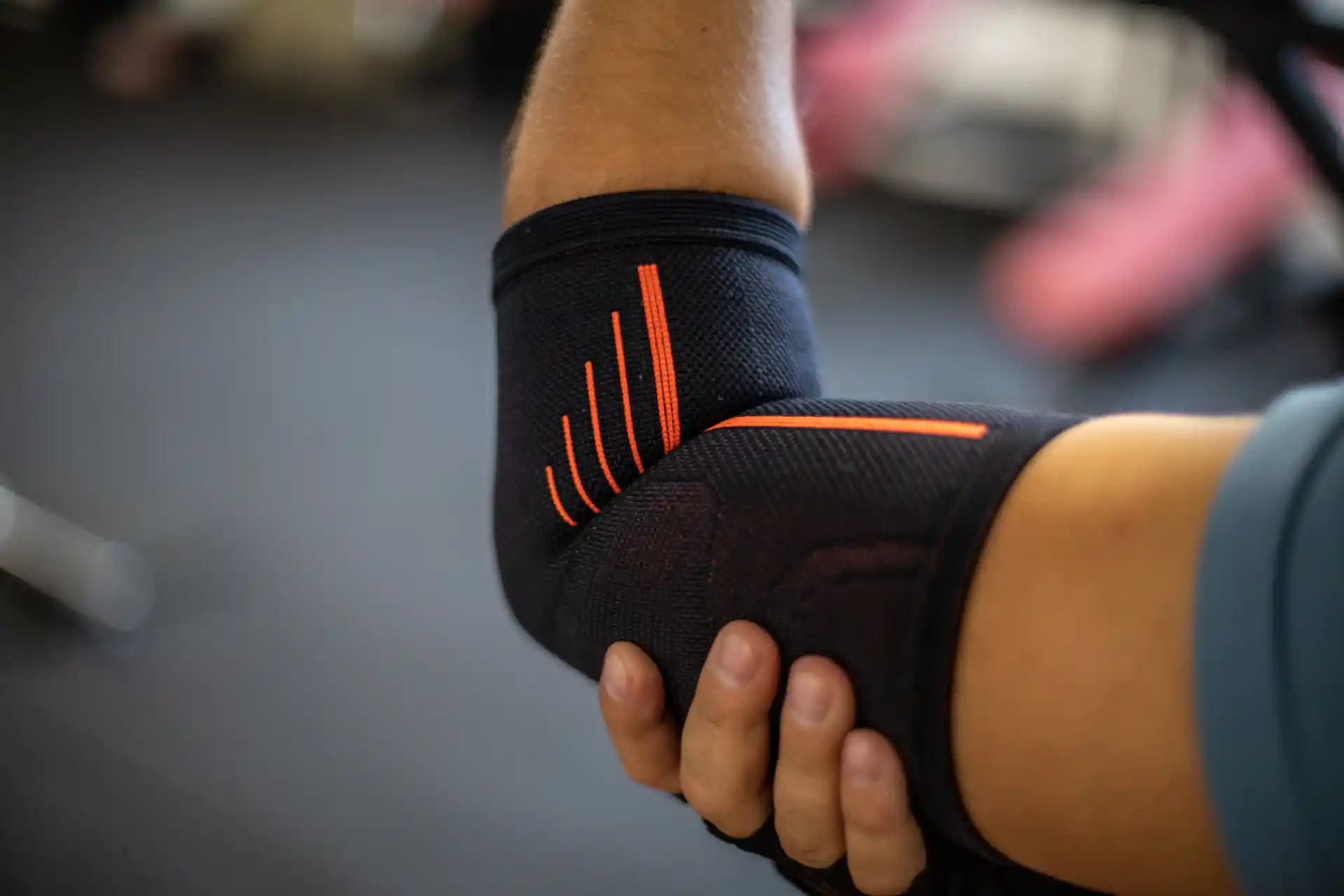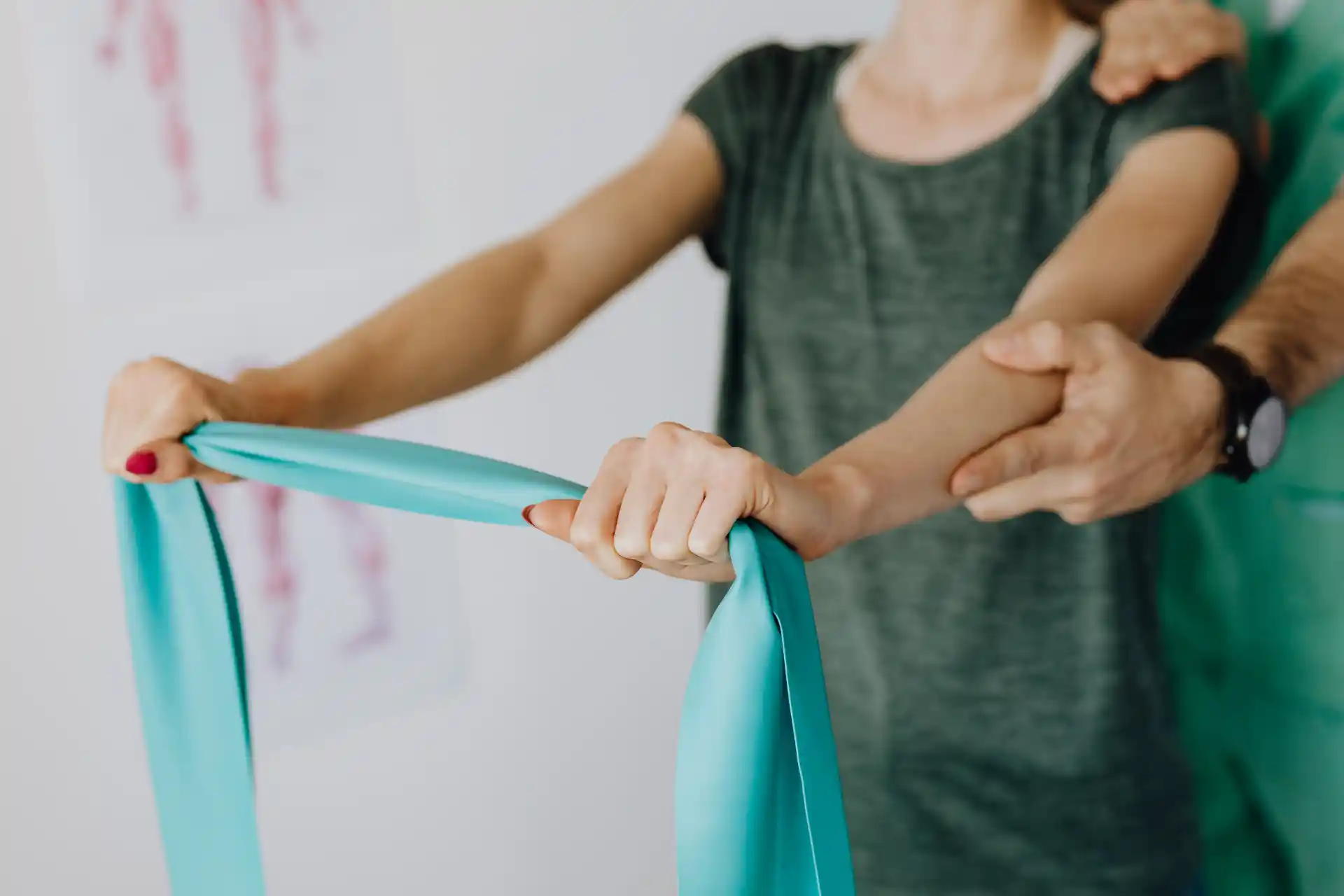You may feel unstoppable one day, only to find your muscles tight, sore, and uncooperative the next. In some instances, this lingering stiffness can be traced back to one overlooked factor: muscle adhesions.
These tiny but troublesome bands of stuck tissue can limit your range of motion, reduce your strength, and slow your healing.
Fortunately, with the right knowledge and a well-rounded approach, you can address these hidden barriers and enjoy smoother, more comfortable movement.
Uncover Muscle Adhesions
Muscle adhesions develop when collagen fibers in your soft tissue stick to neighboring tissues.
A common trigger is microtrauma, or small tears, in your muscles and connective tissues that occur after injuries, repetitive motion, or chronic inflammation.
Instead of healing cleanly, these tissues sometimes form patches of scar tissue that latch onto muscle fibers or fascia, creating adhesions.
Muscle "knots" and adhesions—though having similar symptoms—are not the same. A 2021 overview explains that knots often result from tissues contracting under stress, while adhesions are collagen-based restrictions in the tissue.
The end result, however, is the same: you feel discomfort and find it harder to move freely.
Why These Adhesions Matter
- They can reduce flexibility and strength, making everyday tasks feel heavier or more awkward.
- They raise tension on surrounding muscles, potentially contributing to bigger issues like a repetitive strain injury.
- They often lead to alignment problems, increasing pressure on joints and muscles.
A stiff area in your thigh, for example, can alter your gait and cause hip or lower back strain over time.
Some individuals even mistake muscle adhesions for myalgia, especially when pain persists, yet they cannot pinpoint the exact source.
Read more about conditions that may be attributed to fascia and muscle adhesions: chronic pain, myofascial pain, and muscle injuries.
Compare Adhesions And Knots
It is easy to confuse muscle adhesions with knots, and both can appear anywhere from your shoulders to your calves:
Muscle Adhesions:
- Formed by sticky collagen bundles.
- Often associated with tissue scarring from injury or stress.
- Detected by palpation or noticing restricted motion.
Muscle Knots:
- Caused by tight, overworked fibers bunching together.
- Often stress-related or triggered by poor posture.
- Can sometimes relax with rest and light stretching.
In practice, you might have both. You may carry tension spots (knots) which eventually lead to microscopic damage and scarring (adhesions).
Good news, gentle mobility and focused therapies can help address both issues at once.
Recognize Common Causes
You might think adhesions only affect professional athletes, but they are surprisingly widespread. Here are a few factors that can set the stage:
Injury Or Trauma
Sprains, strains, and accidental impacts can launch a cycle of microtears in your tissues. Once your body begins patching them up, collagen sometimes “glues” one bit of tissue to another.
If you have had a pulled muscle in your back or a hamstring injury and felt lingering tightness, adhesions might be part of the picture.
Overuse And Repetitive Motion
Activities that rely on the same movement pattern day after day—like swinging a tennis racket, typing, or bending for warehouse tasks—can easily set off microtraumas. Known as repetitive strain, your regularly overworked muscles do not get enough recovery time.
Overuse or overtraining syndrome can stress tissues to the point of developing adhesions.
Inadequate Recovery
When you skip proper rest, hydration, or cooling-down routines, you deprive your muscles and fascia of the time they need to heal.
That shortfall in recovery can contribute to excess stiffness, dehydration of fascia, and eventual adhesion formation.
You may want to review tips on how to speed up muscle strain recovery if you are often pushing your limits.
Inflammation
Chronic inflammation—triggered by poor diet, stress, or underlying conditions—can disrupt normal tissue repair. Inflammatory chemicals sometimes accelerate tissue scarring, creating adhesions that further add to your discomfort.
Explore Treatment Methods
Taking control of muscle adhesions usually involves a multi-step plan. A typical approach blends manual techniques, self-care strategies, and advanced procedures like hydrodissection.
Always consult with a medical professional before starting a new treatment regimen for your muscle injuries.
Hands-On Therapies
- Myofascial Release: A therapist applies gentle, sustained pressure to target fascia restrictions. This helps restore normal glide between the layers of muscle and fascia.
- Chiropractic Care: A chiropractor makes hands-on adjustments that realign your musculoskeletal structure. By focusing on posture and alignment, chiropractic treatments can help reduce the excess tension that fosters adhesion buildup.
- Active Release Therapy (ART): A specialized form of manual therapy designed to relieve knots and adhesions by applying targeted pressure to painful spots, then moving the muscle through its range. You might feel discomfort at first, but many people experience quick relief.
Hydrodissection
If you have been struggling with deep or persistent adhesions, hydrodissection may be a powerful option. In this technique, a physician carefully injects a fluid solution between the layers of fascia or near nerve pathways to “dissect” or separate stuck tissues.
This extra fluid helps release tight spots and restore the normal slide and glide of your muscles. It also delivers pain relief and fresh circulation to the area, speeding up healing.
While hydrodissection may need to be repeated a few times, patients often report noticeable improvements in their mobility and a reduction in pain soon after treatment.
Contact us today to schedule a consultation for utilizing hydrodissection for your muscle pain and adhered fascia.
Shockwave Therapy
Extracorporeal Shockwave Therapy (ESWT) uses high-energy sound waves to loosen adhesions in the tissue. You will likely feel a series of pulses hitting the affected region.
This micro-trauma prompts your body to send blood and healing factors to the spot, potentially breaking up adhesions while promoting collagen remodeling.
Self-Care And Home Strategies
- Regular Stretching: Propping your legs up on a stable chair and gently elongating tight muscles can boost blood flow. This is even more relevant if you are battling a muscle contusion or muscle tear, where controlled stretching supports better healing.
- Foam Rolling: Although it can be a bit uncomfortable, rolling across tight spots for 30 to 60 seconds can help loosen up superficial adhesions.
- Heat Application: Fascia responds well to heat to regain elasticity, especially if it has “gummed up” (Johns Hopkins Medicine). A short heating pad session soothes distress and primes the tissue for gentle stretching.
- Targeted Exercise: Low-impact movements, such as yoga or light swimming, help keep your fascia hydrated and flexible. They can reduce the severity of adhesions by encouraging smooth muscle contraction and relaxation.
Maintain Long-Term Relief
Most fascial adhesions do not need to be a lifelong burden. With consistent care, you can work toward freeing yourself from muscle restrictions and returning to your favorite activities.
Stay Hydrated
Even low-level dehydration can dry out your fascia, making adhesions more likely. Aim for steady fluid intake, especially after exercise.
If you suspect that you are not hydrating enough, consider tracking your water intake with a simple habit app or journaling method. Over a few weeks, watch how improved hydration affects your range of motion.
Refine Your Posture
Your posture directly affects how your muscles work together. Slouching can cause tension through your upper back and neck, giving scar tissue more chances to form.
Deliberate posture “resets” every hour—where you roll your shoulders back and hold your head high—will help keep these tissues aligned.
Incorporate Steady Movement Breaks
If your job or hobby requires repetitive tasks, stand up and stretch every 20 to 30 minutes. A short break with gentle shoulder rolls or quick lower-back stretches can reduce the microtrauma that leads to adhesion formation.
Seek Help For Chronic Pain
Persistent pain, reduced mobility, and recurring adhesions may signal underlying dysfunction that needs professional support.
Whether you choose chiropractic care, physical therapy, or a specialized modality like hydrodissection, addressing the root cause is key.
You may also benefit from exploring ways to boost your muscle recovery if you find yourself repeatedly dealing with soreness or stiffness.
Simple Recap And Next Step
- Muscle Adhesions form when collagen sticks to adjacent tissue, creating stiffness and limiting your movement.
- Common Causes include injuries, overuse, poor recovery habits, and chronic inflammation.
- Treatment Options span from hands-on methods like myofascial release and chiropractic adjustments to modern interventions like hydrodissection and shockwave therapy.
- Long-Term Relief involves habits such as skilled hydration, good posture, regular movement breaks, and prompt professional help if the problem persists.
By weaving these strategies into your routine, you will gradually reduce the tightness in your muscles and fascia.
With time and reliable support, you can bring flexibility, comfort, and renewed strength back into your life. You have all the tools to succeed, and your effort will pay off.
Seek RELIEF®
RELIEF® is an evidence-backed treatment that targets dysfunctional fascia—the connective tissue that surrounds and supports muscles. When fascia becomes tight or adhered after injury, it can restrict movement, cause pain, and slow recovery.1,2
Using a minimally invasive hydrodissection technique, RELIEF® gently separates and releases adhered fascia and may help restore healthy tissue mobility and improve muscle recovery—without the need for steroids, surgery, anesthesia, or extended downtime.3,4,5
If you’re in the Miami area and recovering from a muscle injury, contact us today to schedule a consultation and learn how RELIEF® can help restore your mobility and comfort.






.svg)